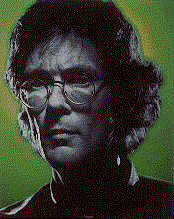2005: Welcome to NoCal and SoCal, the uneasy sister-states of what used to be California. Here the millennium has come and gone, leaving in its wake only stunned survivors. In Los Angeles, Berry Rydell is a former armed-response rtentacop now working for a bounty hounter. Chevette Washington is a bicycle messenger turned pickpocket who impulsively snatches a pair of innocent-looking sunglasses. But they are no ordinary shades. What you can see through these high-tech specs can make you rich - or get you killed. Now Berry and Chevette are on the run, zeroing in on the digitalized heart of DatAmerica, where pure information is the greatest high. And a mind can be a terrible thing to crash...
dixit back-cover of the 1993 Seal Book edition (ISBN 0-7704-2614-X)
William Gibson wrote a script for the movie Alien^3, though the final version of the movie is quite different from his script, it is IMHO far superior to the finished movie. You can either see the complete script or just a summary.
Agrippa is somewhat apart in Gibsons work, it is very different from his other novels, in fact it is not even a novel, but rather a long monologue. The text first appeared in electronic form, and could only be read once. Then it would self-destruct. With the floppy came 2 pictures, one wich would fade away after being exposed to light for one hour, and the other only appearing after being exposed to light for one hour. This was all wrapped up in a box. The whole thing was rather expensive and ephemere<sp>... Apparently he wrote this after his father had died, wich would explain the text somehow...
Shortly after hitting the market, the floppy was cracked and the text widely spread. Some say that this was Gibson's intention from the beginning on, but I have no confirmation on this yet.
Joe Foley's William Gibson page.
Back to my homepage
layout ©1995 by Paranoid Concepts

